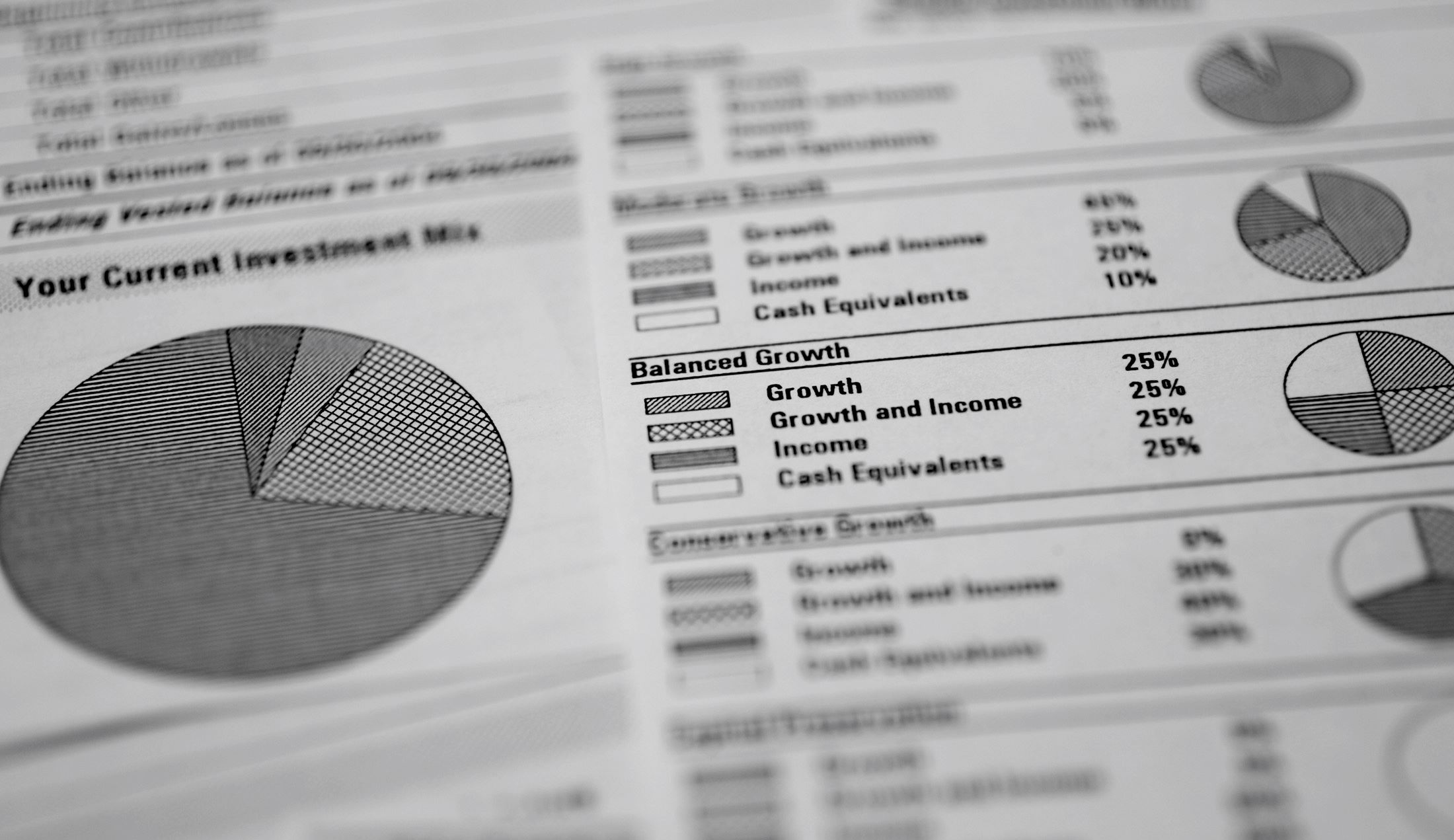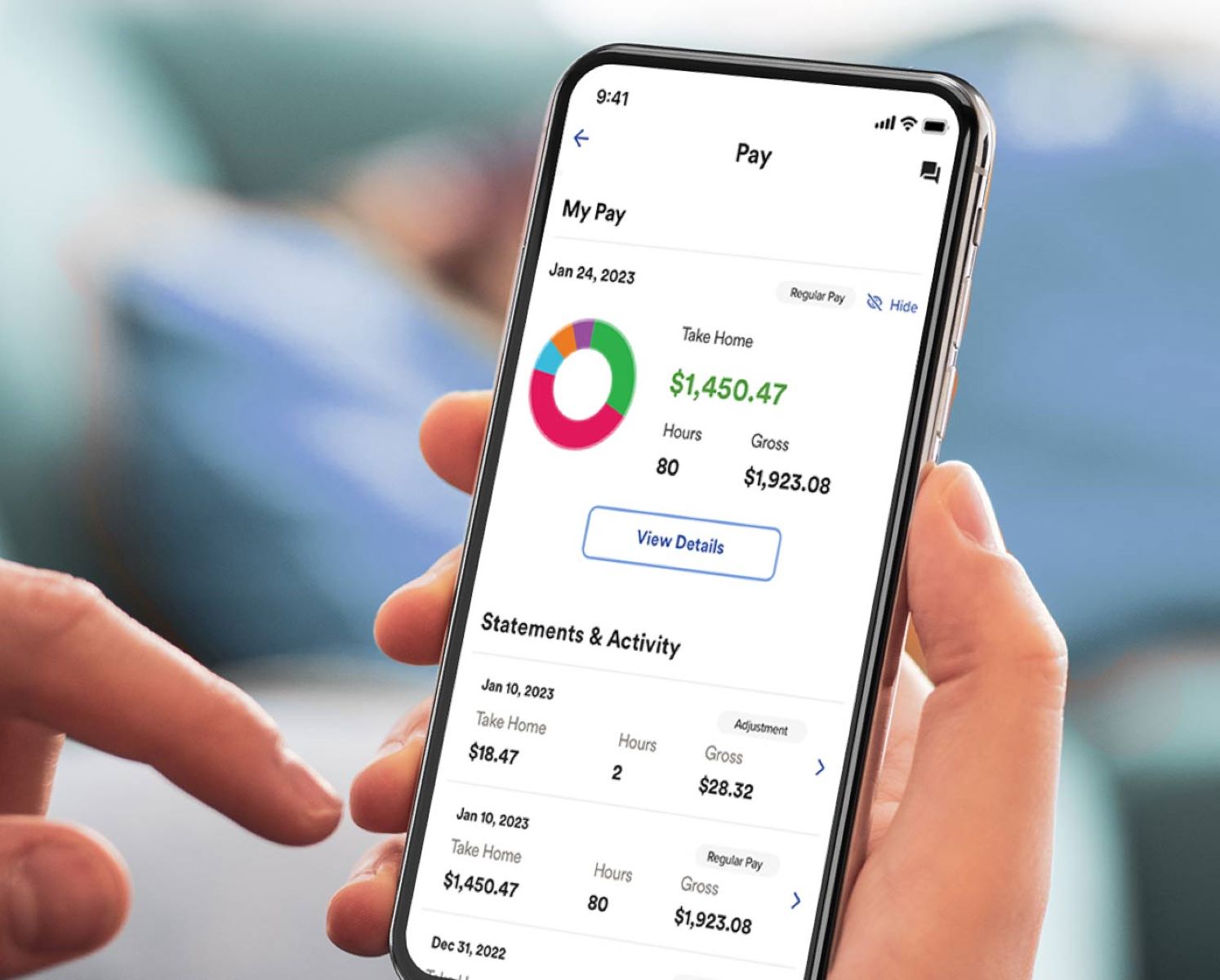

Finance
Why Is My Rate Of Return Negative 401K
Published: October 17, 2023
Discover why your rate of return in your 401K is negative and how to improve it. Get expert advice and tips on managing your personal finances.
(Many of the links in this article redirect to a specific reviewed product. Your purchase of these products through affiliate links helps to generate commission for LiveWell, at no extra cost. Learn more)
Table of Contents
- Introduction
- Understanding Rate of Return in 401(k)
- Factors Affecting Negative Rate of Return
- Market Volatility
- Asset Allocation
- Investment Performance
- Contribution Rates
- Strategies to Improve Rate of Return
- Review Asset Allocation
- Diversify Investments
- Consider Professional Assistance
- Increase Contribution Amounts
- Conclusion
Introduction
When it comes to investing in a 401(k), one of the most important metrics to monitor is the rate of return. This is a measure of the profitability of your investment portfolio over a specific period of time. Ideally, you would like to see a positive rate of return, as it indicates that your investments are growing. However, there may be instances where you notice a negative rate of return, which can be concerning and leave you wondering why.
Understanding why your rate of return in your 401(k) is negative is crucial to making informed decisions about your investments. In this article, we will explore the various factors that could contribute to a negative rate of return and provide strategies to improve your overall investment performance.
Disclaimer: It’s important to note that the information provided in this article is of a general nature and should not be considered financial advice. We recommend consulting with a qualified financial advisor to assess your specific situation.
With that said, let’s dive into the factors that can impact your rate of return and explore potential solutions to optimize your investment performance.
Understanding Rate of Return in 401(k)
Before delving into the reasons behind a negative rate of return in your 401(k), it’s important to have a clear understanding of what rate of return means in the context of your retirement savings.
The rate of return in your 401(k) is a measure of the percentage increase or decrease in the value of your investment portfolio over a specific period of time. It reflects the performance of your investments and indicates how well your savings are growing.
For example, if you initially invested $10,000 in your 401(k) and, at the end of the year, the value of your portfolio has grown to $11,000, your rate of return would be 10%. Conversely, if the value of your portfolio has decreased to $9,000, your rate of return would be -10%, indicating a negative return.
It’s important to note that the rate of return is calculated based on the overall performance of your portfolio, taking into account both the appreciation or depreciation of the investments themselves, as well as any dividends or interest earned during the period.
To calculate the rate of return, the following formula is commonly used:
Rate of Return = (Ending Value – Beginning Value) / Beginning Value * 100
Having a clear understanding of the rate of return in your 401(k) is essential for monitoring and evaluating the performance of your investments. It allows you to assess whether your savings are on track to meet your retirement goals, and to make necessary adjustments or improvements along the way.
Now that we have a solid foundation in understanding rate of return, let’s explore the factors that can contribute to a negative rate of return in your 401(k).
Factors Affecting Negative Rate of Return
Several factors can contribute to a negative rate of return in your 401(k). It’s important to identify and understand these factors to effectively address them and improve your investment performance. Let’s take a closer look at some key factors that can lead to a negative rate of return:
- Market Volatility: The stock market is inherently subject to fluctuations, and market volatility can significantly impact the performance of your investments. During periods of market downturns or economic uncertainties, the value of your 401(k) investments may decrease, resulting in a negative rate of return. Factors such as geopolitical events, economic indicators, and investor sentiment can all influence market volatility.
- Asset Allocation: The allocation of your investments across different asset classes, such as stocks, bonds, and cash, plays a crucial role in determining your rate of return. If your portfolio is heavily concentrated in one asset class that experiences poor performance, your overall rate of return may suffer. It’s essential to maintain a well-diversified portfolio to mitigate the impact of any underperforming investments.
- Investment Performance: The individual performance of the investments within your portfolio can directly affect your rate of return. If specific investments within your 401(k) underperform or experience losses, it can drag down the overall performance of your portfolio. Monitoring the performance of your investments and making adjustments when necessary is critical.
- Contribution Rates: Another factor to consider is the contribution rates to your 401(k). If you’re not contributing enough or consistently to your retirement savings, it can limit the potential for growth and result in a negative rate of return. Increasing your contribution amounts can help boost your savings and improve your rate of return over time.
It’s important to note that these factors are not mutually exclusive and can often interact with one another. For example, market volatility can impact the performance of your investments and asset allocation, which, in turn, can affect your rate of return.
Now that we’ve identified the factors that can contribute to a negative rate of return, let’s explore strategies to improve your rate of return and optimize your 401(k) performance.
Market Volatility
Market volatility is one of the key factors that can contribute to a negative rate of return in your 401(k). The stock market is known for its highs and lows, and during periods of volatility, your investments may experience significant fluctuations in value.
Various factors can contribute to market volatility, including geopolitical events, economic indicators, and investor sentiment. These factors can create uncertainty and trigger sell-offs, causing prices to decline. When the value of your investments decreases during a volatile market, it can result in a negative rate of return.
While market volatility is beyond your control, there are strategies you can implement to mitigate its impact on your 401(k) performance:
- Diversify Your Portfolio: Building a well-diversified portfolio can help spread the risk across different asset classes, reducing the impact of market volatility. By investing in a mix of stocks, bonds, and other asset classes, you can cushion the potential losses incurred during market downturns with the gains from other investments. Diversification can help you maintain a more stable rate of return even in volatile market conditions.
- Stay Invested for the Long Term: While market fluctuations can be unsettling, it’s important to remember that investing in the stock market is a long-term endeavor. Historically, the market has shown resilience and has recovered from downturns. By staying invested for the long term and riding out the ups and downs, you give your investments the opportunity to recover and potentially generate positive returns.
- Consider Dollar-Cost Averaging: Dollar-cost averaging is an investment strategy where you consistently invest a fixed amount at regular intervals, such as monthly or quarterly, regardless of market conditions. This approach allows you to buy more shares when prices are low and fewer shares when prices are high. Over time, this can help smooth out the impact of market volatility and potentially improve your rate of return.
It’s important to note that while these strategies can help mitigate the impact of market volatility, they do not guarantee positive returns. Market conditions are unpredictable, and past performance is not indicative of future results. Therefore, it’s crucial to regularly monitor your investments and make adjustments as needed to align with your risk tolerance and financial goals.
Now that we’ve explored market volatility, let’s move on to the next factor that can contribute to a negative rate of return: asset allocation.
Asset Allocation
Your asset allocation, or the distribution of your investments across different asset classes, is a critical factor that can impact the rate of return in your 401(k). How you allocate your funds between stocks, bonds, cash, and other investment options can determine the level of risk and potential returns in your portfolio.
If your asset allocation is heavily weighted towards high-risk investments, such as stocks, it can expose your portfolio to greater volatility. During periods of market downturns, the value of stocks tends to decline, potentially leading to a negative rate of return. On the other hand, an allocation that is too conservative, with a high concentration in low-risk investments like bonds or cash, may not generate enough growth to keep up with inflation and could result in a lower return over the long term.
Optimizing your asset allocation is essential for finding the right balance between risk and return. Here are some strategies to consider:
- Assess Your Risk Tolerance: Your risk tolerance is a crucial factor in determining your asset allocation. Consider your financial goals, time horizon, and comfort level with risk. If you have a longer time horizon and can withstand short-term market fluctuations, you may be willing to take on more risk and allocate a larger portion of your portfolio to stocks. Conversely, if you have a shorter time horizon or prefer a more conservative approach, a higher allocation to bonds or cash may be more suitable.
- Diversify Across Asset Classes: Diversification is key to mitigating the risk associated with individual investments. Allocate your assets across different asset classes, such as stocks, bonds, and cash, to spread the risk and enhance the potential for returns. This strategy can help reduce the impact of underperforming investments and improve the stability of your rate of return.
- Rebalance Regularly: Over time, the performance of different asset classes can deviate from your target allocation. Regularly review and rebalance your portfolio to realign with your desired asset allocation. Rebalancing involves selling assets that have performed well and buying assets that have underperformed, ensuring that your portfolio stays in line with your long-term goals.
It’s important to note that asset allocation should be carefully evaluated and adjusted based on your individual circumstances and investment objectives. Consider consulting with a financial advisor who can provide personalized guidance based on your specific needs.
Now that we’ve discussed the impact of asset allocation, let’s move on to the next factor: investment performance.
Investment Performance
The performance of your individual investments is a significant factor that can contribute to a negative rate of return in your 401(k). The performance of stocks, bonds, mutual funds, and other investment options can vary, and if you have investments that underperform or experience losses, it can affect your overall rate of return.
While investment performance is influenced by various factors, including market conditions and the quality of the specific investment, there are strategies you can employ to improve your investment performance:
- Research and Due Diligence: Before making investment decisions, conduct thorough research and due diligence on potential investments. Understand the investment’s historical performance, risk factors, and future prospects. Review the company’s financials and any available research or analyst reports. This research can help you make more informed investment decisions and increase the likelihood of positive returns.
- Regular Monitoring: Stay vigilant and monitor the performance of your investments on an ongoing basis. Regularly review financial statements, quarterly reports, and any relevant news or industry updates. Understanding how your investments are performing allows you to identify any underperforming assets and make necessary adjustments.
- Consider Professional Assistance: If you’re not comfortable or experienced with investment analysis, consider seeking the assistance of a qualified financial advisor. A professional can provide insights, advice, and recommendations tailored to your financial goals and risk tolerance. They can help you identify high-quality investments and make informed decisions to improve your rate of return.
- Take a Long-Term Perspective: It’s important to remember that investing in the stock market is a long-term endeavor. Short-term fluctuations are common, and trying to time the market can be challenging. Instead, focus on a long-term investment strategy based on your financial goals. By taking a patient approach and staying invested over time, you give your investments the opportunity to generate positive returns and potentially offset any temporary losses.
It’s essential to regularly review your investment portfolio and make adjustments as necessary based on your financial objectives and risk tolerance. Remember that past performance is not indicative of future results, and a diversified portfolio can help mitigate the risk associated with individual investments.
Now that we’ve explored investment performance, let’s move on to the next factor: contribution rates.
Contribution Rates
The contribution rates to your 401(k) plan can have a significant impact on your rate of return. If you’re not contributing enough or consistently to your retirement savings, it can limit the growth potential of your investments and potentially result in a negative rate of return.
Here are some key points to consider regarding contribution rates:
- Review Your Current Contribution Amount: Take a look at your current contribution amount and evaluate if it aligns with your financial goals and retirement objectives. If you’re contributing below the maximum allowable amount, consider increasing your contributions to maximize the potential for growth. Even small increases in contribution rates can have a significant impact on your long-term savings.
- Take Advantage of Employer Matching: Many employers offer matching contributions to their employees’ 401(k) plans. If your employer provides a match, make sure you’re taking full advantage of this benefit. Matching contributions effectively provide free money towards your retirement savings and can significantly boost your rate of return.
- Consistency is Key: Consistently contributing to your 401(k) is crucial for long-term growth. Set up automatic contributions from your paycheck to ensure regular and consistent investments. This approach helps you avoid the temptation to reduce or skip contributions during market downturns or financial uncertainties.
- Take Advantage of Contribution Increases: Many 401(k) plans allow participants to increase their contribution rates annually. Take advantage of these opportunities to gradually increase your contributions over time. By doing so, you can benefit from the power of compounding and potentially achieve higher returns on your investments.
By increasing your contribution rates, you allocate more funds towards your retirement savings, thereby increasing the potential for growth and improving your overall rate of return. However, it’s important to strike a balance between contributing to your 401(k) and other financial obligations, such as debt repayment and emergency savings.
Regularly reassess your contribution rates and make adjustments based on your financial situation and goals. When combined with the other strategies we’ve discussed, optimizing your contribution rates can have a positive impact on your rate of return and help you achieve a more comfortable retirement.
Now that we’ve covered the factors that can contribute to a negative rate of return and strategies to improve it, let’s conclude our discussion.
Strategies to Improve Rate of Return
Improving your rate of return in your 401(k) requires careful consideration, analysis, and implementation of effective strategies. While there are no guarantees in investing, the following strategies can help enhance your investment performance and optimize your rate of return:
- Review Asset Allocation: Regularly assess your asset allocation and ensure it aligns with your risk tolerance and investment goals. Adjust your allocation as needed to maintain a diversified portfolio that balances risk and potential returns.
- Diversify Investments: Spread your investments across a variety of asset classes, sectors, and geographic regions to minimize risk. This diversification can help mitigate the impact of underperforming investments and increase the potential for positive returns.
- Consider Professional Assistance: Seek guidance from a qualified financial advisor who can provide personalized advice based on your financial goals. They can help you navigate the complexities of the market and make informed investment decisions.
- Increase Contribution Amounts: Boosting your contribution rates can accelerate the growth of your savings and potentially improve your rate of return. Take advantage of employer matching contributions and gradually increase your contribution percentages over time.
- Monitor and Adjust Investments: Regularly review the performance of your investments and make necessary adjustments based on your goals and market conditions. Align your portfolio with strong-performing assets while phasing out underperforming ones.
- Stay Informed: Keep yourself updated on market trends, economic indicators, and other relevant news that may impact your investments. Knowledge is a powerful tool in making informed investment decisions and improving your rate of return.
Remember, it’s important to approach investment management with a long-term perspective. Market fluctuations are normal, and short-term setbacks should not deter you from your investment strategy. Stay patient, remain disciplined, and focus on achieving your long-term financial goals.
Lastly, it’s crucial to emphasize that these strategies should be tailored to your unique circumstances and financial objectives. Consider consulting with a financial advisor who can provide personalized advice based on your individual needs and goals.
By employing these strategies, you can enhance your rate of return in your 401(k) and work towards building a more secure and prosperous financial future.
Now let’s conclude our discussion on improving the rate of return in your 401(k).
Review Asset Allocation
One of the most important strategies to improve your rate of return in your 401(k) is to regularly review and assess your asset allocation. Asset allocation refers to how your investments are distributed across different asset classes such as stocks, bonds, and cash.
An appropriate asset allocation is vital as it determines the level of risk and potential returns in your portfolio. Here are a few key considerations when reviewing your asset allocation:
- Assess Your Risk Tolerance: Start by evaluating your risk tolerance, which is your willingness and ability to withstand market fluctuations. Depending on your financial goals, time horizon, and personal comfort level, you can determine if you should have a more conservative approach with a higher allocation to bonds and cash, or a more aggressive approach with a higher allocation to stocks.
- Diversify Your Investments: Diversification is a crucial element of successful investing. By spreading your investments across different asset classes, industries, and regions, you can reduce the impact of any single investment’s performance on your overall portfolio. Diversification helps to mitigate risk and can potentially improve your rate of return.
- Consider Your Investment Goals: Your asset allocation should align with your investment goals. If you are aiming for long-term growth and can tolerate short-term market fluctuations, a higher allocation to stocks may be appropriate. On the other hand, if you have a shorter time horizon or prefer more stability, a higher allocation to bonds and cash may be more suitable.
- Rebalance Your Portfolio: Over time, the performance of different asset classes may cause your portfolio to drift from its target allocation. Regularly rebalancing your portfolio involves selling assets that have appreciated and buying assets that have underperformed. Rebalancing helps maintain your desired asset allocation and ensures that you are not overly exposed to any single asset class.
When reviewing your asset allocation, keep in mind that it should be a dynamic process. As you approach different stages of your financial journey, your goals and risk tolerance may change. Regularly reassess your asset allocation to ensure it remains in line with your evolving circumstances.
It’s important to note that asset allocation decisions should be based on careful analysis and consideration of your individual circumstances. If you are unsure about the optimal asset allocation for your 401(k), it may be beneficial to consult with a financial advisor who can provide personalized guidance and help you make informed decisions.
By reviewing and adjusting your asset allocation as needed, you can improve your rate of return and position your 401(k) for long-term growth.
Now, let’s move on to the next strategy: diversifying your investments.
Diversify Investments
Diversifying your investments is a crucial strategy for improving your rate of return in your 401(k). Diversification involves spreading your investments across different asset classes, industries, and geographic regions to reduce risk and potentially enhance returns.
Here are some key points to consider when diversifying your investments:
- Spread Across Asset Classes: Allocate your investments across different asset classes, such as stocks, bonds, and cash equivalents. This allows you to balance the risk and return potential of your portfolio. When one asset class underperforms, others may provide stability or even positive returns, helping buffer the impact on your overall rate of return.
- Invest in a Variety of Industries: Within each asset class, diversify your holdings across various industries. Different industries may perform differently based on economic conditions and market cycles. By investing in a range of industries, you can minimize the impact of any single industry’s performance on your portfolio.
- Consider Geographic Diversification: Look beyond your home country and consider investing in international markets. This can provide exposure to regions with different economic factors and growth potential. By diversifying geographically, you can mitigate the risks associated with an overly concentrated portfolio in one region.
- Include Different Investment Vehicles: Explore various investment vehicles available in your 401(k), such as mutual funds, exchange-traded funds (ETFs), and individual securities. Each investment vehicle offers its own benefits and risks, and by including a mix of options, you can further diversify your portfolio.
- Reassess and Rebalance: Regularly reassess your investment holdings and make adjustments to maintain a diversified portfolio. This can involve selling investments that have become overrepresented and reinvesting in areas where you may be underrepresented. Rebalancing ensures that your asset allocation aligns with your investment goals.
Remember that diversification does not guarantee profits or protect against losses, but it can help manage risk and potentially improve your rate of return. It spreads your investments across different opportunities, reducing the impact of any single investment’s performance on your overall portfolio. Diversification is especially crucial during market downturns, as it shields you from the full impact of a poorly performing asset class or investment.
When diversifying your investments, it’s important to consider your risk tolerance, investment goals, and time horizon. Consult with a financial advisor, who can provide personalized guidance based on your individual circumstances and help you build a well-diversified portfolio.
By diversifying your investments, you can lower the risk of negative impacts from any one investment and potentially improve your rate of return in your 401(k).
Now, let’s proceed to the next strategy: considering professional assistance.
Consider Professional Assistance
Considering professional assistance is an important strategy for improving your rate of return in your 401(k). Working with a qualified financial advisor or investment professional can provide you with valuable insights, guidance, and expertise to help optimize your investment performance.
Here are the key benefits of seeking professional assistance:
- Expertise and Knowledge: Financial advisors are trained professionals with extensive knowledge and experience in the field of investing. They can help you navigate the complexities of the financial markets and provide you with insights and recommendations that are tailored to your specific needs and goals.
- Personalized Investment Strategy: A financial advisor can help you develop a personalized investment strategy that aligns with your risk tolerance, time horizon, and financial objectives. They will consider factors such as your age, income, and financial obligations to create a plan that suits your unique circumstances.
- Portfolio Management: Investment professionals have the expertise to actively manage your portfolio, making necessary adjustments as market conditions change. They can help ensure that your investments are well-diversified, regularly rebalanced, and aligned with your long-term goals.
- Behavioral Coaching: One of the biggest challenges for individual investors is managing their emotions during market volatility. A financial advisor can provide valuable behavioral coaching, helping you stay disciplined and focused on your investment strategy, even during times of market turbulence.
- Access to Research and Resources: Financial advisors have access to extensive market research, economic analysis, and investment tools that may not be readily available to individual investors. They can leverage these resources to identify investment opportunities and make informed decisions on your behalf.
When selecting a financial advisor, it’s important to do your due diligence and choose someone who is experienced, reputable, and holds the necessary certifications and licenses. Seek recommendations from trusted sources, conduct interviews, and ask probing questions to ensure a good fit for your needs.
Remember that working with a financial advisor does come with costs. These costs can vary based on the services provided, such as asset management fees or hourly rates for financial planning. It’s essential to understand the fee structure and discuss it upfront with the advisor to ensure transparency.
Ultimately, professional assistance can provide you with the expertise and support necessary to enhance your rate of return, make informed investment decisions, and navigate the complexities of the financial markets. By leveraging the knowledge and experience of a qualified professional, you can improve your investment performance and work towards achieving your financial goals.
Now, let’s move on to the final strategy: increasing contribution amounts.
Increase Contribution Amounts
Increasing your contribution amounts is a powerful strategy for improving your rate of return in your 401(k). By allocating more funds towards your retirement savings, you can accelerate the growth of your investments and potentially enhance your overall investment performance.
Here are some key points to consider when increasing your contribution amounts:
- Assess and Adjust Your Budget: Start by reviewing your current budget and identifying areas where you can cut expenses or redirect funds towards your retirement savings. By analyzing your spending habits and making necessary adjustments, you can free up extra money to contribute to your 401(k).
- Take Advantage of Employer Matching: If your employer offers a matching contribution, make sure you are contributing enough to maximize this benefit. Employer matches are essentially free money added to your retirement savings, making it an excellent opportunity to boost your overall rate of return.
- Gradually Increase Contributions: If you’re unable to make a significant increase in your contribution amounts immediately, consider gradually increasing your contributions over time. Even small incremental increases can make a substantial difference in the long run. Take advantage of any pay raises or bonuses by allocating a portion to your 401(k).
- Consider Catch-Up Contributions: If you’re age 50 or older, take advantage of catch-up contributions. These are additional contributions allowed by the IRS for those approaching retirement. Catch-up contributions can significantly increase your savings potential and improve your rate of return.
- Avoid Contribution Reductions: As tempting as it may be to reduce or pause contributions during challenging times, try to avoid this whenever possible. Consistently contributing, even during market downturns, allows you to take advantage of potential buying opportunities and effectively dollar-cost average your investments.
Increasing your contribution amounts allows you to harness the power of compounding, which can significantly impact your long-term rate of return. By contributing more, you increase the base amount of your investments, enabling them to grow at an accelerated pace over time.
Remember to regularly reassess your contribution amounts to ensure they align with your financial goals and capacity. Life circumstances may change, such as salary increases or changes in expenses, allowing you to further increase your contributions.
Increasing your contribution amounts may require some sacrifice and disciplined financial planning, but the long-term benefits can be substantial. However, it’s essential to strike a balance between increasing contributions and other financial obligations, such as debt repayment and emergency savings.
By increasing your contribution amounts, you can maximize your retirement savings potential, improve your rate of return, and work towards the financial security you desire in retirement.
Now, let’s conclude our discussion on strategies to improve your rate of return in your 401(k).
Conclusion
Improving the rate of return in your 401(k) requires a comprehensive approach that takes into account various factors and strategies. By understanding the factors that can contribute to a negative rate of return, such as market volatility, asset allocation, investment performance, and contribution rates, you can begin to address these issues and work towards optimizing your investment performance.
Strategies such as reviewing asset allocation, diversifying investments, considering professional assistance, and increasing contribution amounts can help improve your rate of return and position your 401(k) for long-term growth. Focusing on a well-diversified portfolio, regularly monitoring investments, and aligning your strategy with your risk tolerance and investment goals are essential steps in achieving financial success.
It’s important to remember that improving your rate of return is a continuous process that requires ongoing evaluation and adjustments. The market is ever-changing, and your financial goals and circumstances may evolve over time. Regularly reviewing your investment strategy, seeking professional advice when needed, and staying informed about market trends are key to maintaining a healthy rate of return.
Lastly, it’s crucial to keep in mind that investing involves risks, and past performance is not indicative of future results. It’s important to consider your own risk tolerance and consult with a qualified financial advisor to tailor investment strategies to your specific needs.
By implementing these strategies and remaining patient and disciplined, you can work towards improving your rate of return in your 401(k) and take important steps towards achieving your long-term financial goals.














